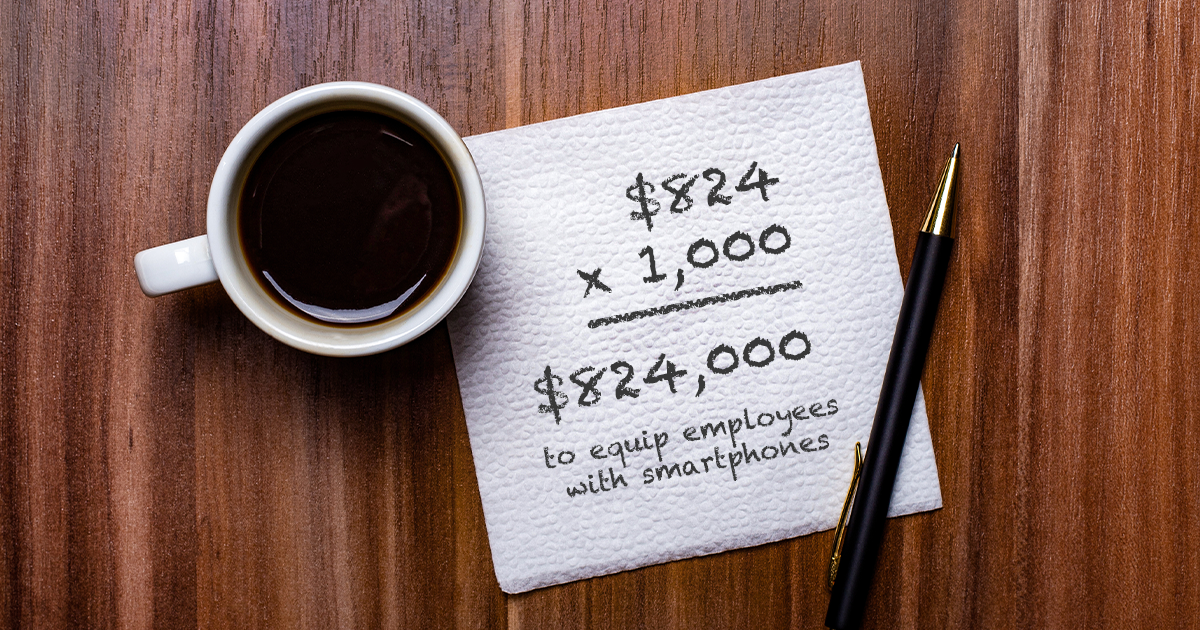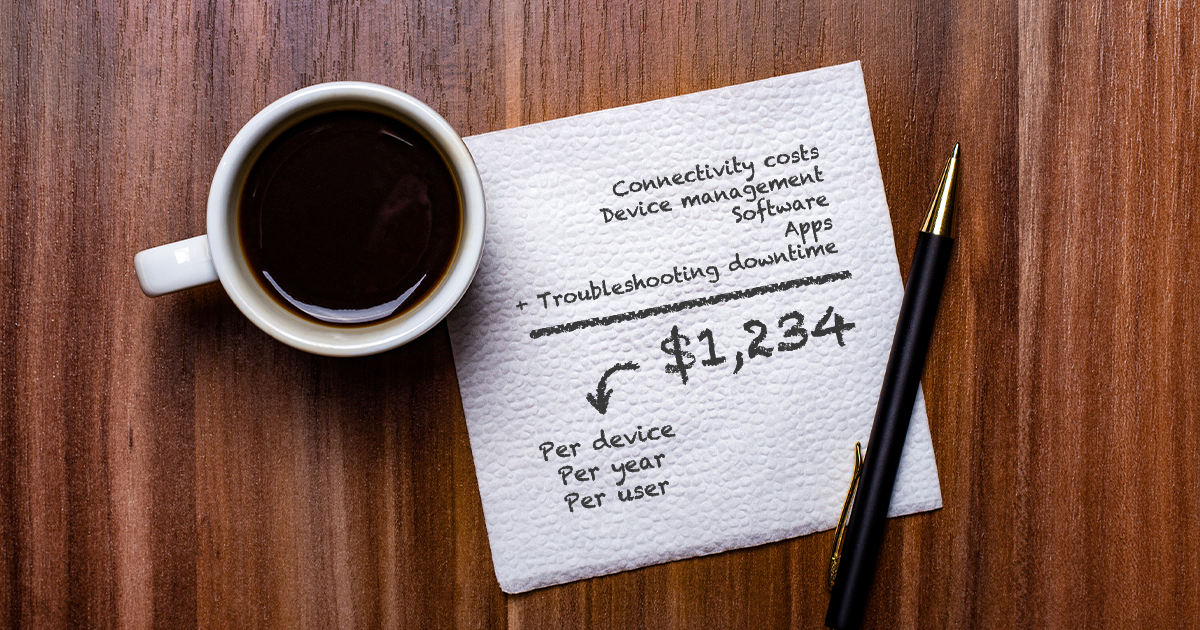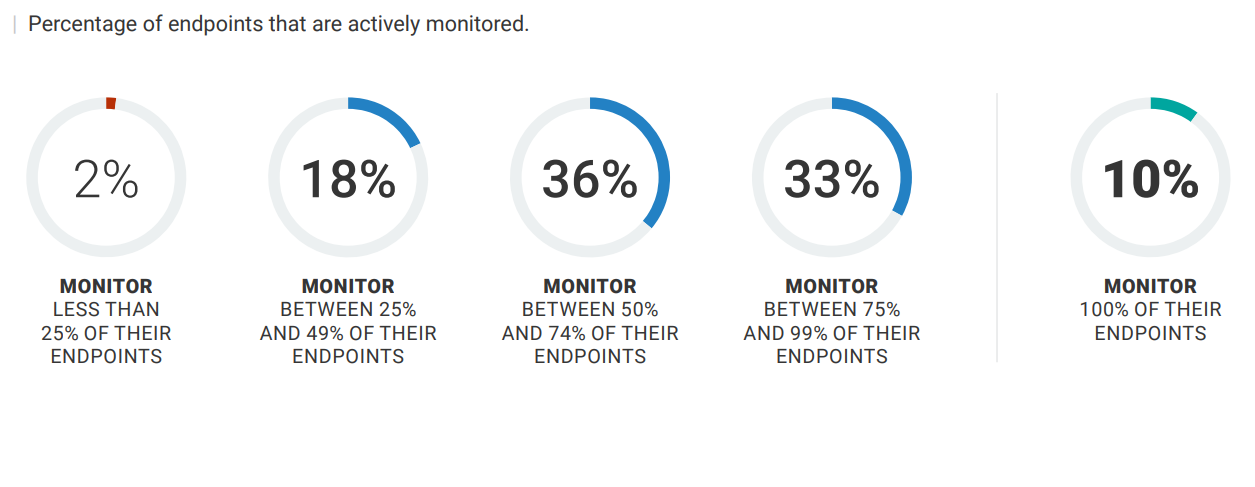Device Visibility: Just as Important as Device Functionality | SOTI

In 2023, the average cost of a business smartphone per employee is expected to reach $824 (USD), and by 2025, 69% of enterprises will manage device fleets of 1,000+ devices. Using some back-of-the-napkin math, it will cost $824,000 for (69% of) businesses (by 2025) to equip employees with smartphones.

That number is right. And it’s also wrong.
It’s right that $824 x 1,000 = $824,000. But it’s wrong because it only accounts for the cost of procuring the devices themselves. It doesn’t factor in the related costs of maintaining and using those devices. This would be like saying the cost of owning a car is just the price you pay for the vehicle without including gas, insurance, maintenance and repair costs.
So, back to the back of the napkin we go. When including things like connectivity costs, device management, software, apps and troubleshooting and reducing downtime, the cost per device grows by almost $400 (USD) to $1,234 (USD) per device, per user, per year.

Increasing Device Adoption and Device Mix While Controlling Management Costs
In a recent SOTI industry report, When Work is Anywhere: Managing Technology’s Role in the Distributed Workforce, there are two critical statistics to note:
|
DEVICE ADOPTION Globally, the total number of devices used by organizations has grown by 37%. |
DEVICE MIX The mix of device types used across organizations has increased by 38%. |
WANT MORE STATS?
Get Your FREE Copy of When Work is Anywhere: Managing Technology’s Role in the Distributed Workforce
The number and types of devices are increasing, and IT budgets need to get the biggest bang from their bucks.
Now, the cost of purchasing a smartphone, tablet or rugged device may be fixed or known, but the costs associated with usage and maintenance can fluctuate. They can also be controlled and brought down. This is because today’s devices are founts of information which, when accessed and acted upon intelligently, can lower the total cost of ownership (TCO). Think of it like your car’s dashboard.
Imagine Your Mobile Devices are Like a Car
The average MSRP for a new car in 2022 was around $33,300 (USD), and the average cost to drive it is $10,728 (USD) per year – nearly $900 (USD) per month. In just over three years, you will spend as much on car usage and maintenance as you did on the car itself.
This is where your car’s dashboard comes into play. It’s full of information that can help you prolong the life of your vehicle while reducing TCO. Imagine trying to guess when to fill up without the aid of a gas gauge. Without a check engine light, you would never know when your car needed servicing. And how would you know your tire pressure was low if there was no warning light?
Now, apply the same principles from your car to your business-critical mobile devices. Do you know what’s happening with the following:
 |
 |
 |
|
MOBILE AND INDUSTRIAL PRINTER PERFORMANCE |
SMARTPHONE PERFORMANCE |
RUGGED DEVICE PERFORMANCE |
|
|
|
There’s a good chance your business isn’t monitoring this data. Take a look below:

Source: ProServeIT
According to the chart above, 90% of organizations don’t have visibility into all device endpoints. And remember, by 2025, your organization will likely have more than 1,000 devices deployed. Will your organization be one of the 10% that monitors all its endpoints?
Are all your devices working as expected? Are they at risk of a security breach? Are they using more data than necessary? How will you know?
You just won’t. And without that information, you can’t really control or lower the TCO of your business-critical mobile devices. As a reference point, the business TCO for employees utilizing Bring-Your-Own-Device (BYOD) is $4,000 (USD) per year. And that’s for a device the organization didn’t purchase.
What Your Devices Are Telling You Is as Important as What They Can Actually Do
Organizations are now considering visibility into device performance to be equally as important as functionality.
The crux of this blog is that the number and mixture of devices are increasing and organizations want to minimize dollars spent while maximizing performance and lifespan. Furthermore, device visibility can help you save money in other areas of the business. Going back to the car example, having visibility into tire pressure can help save on gas costs, as improperly inflated tires can negatively impact fuel efficiency and lead to blowouts and accidents.
So, how do organizations get that critical visibility? There are a few ways:
- Enterprise Mobility Management (EMM): Those thousand devices we mentioned earlier? You need to know if they’re protected against the latest security threats. You need to be certain they aren’t in areas they shouldn’t be. You need to be certain that the data on those devices is only accessible in the right places. EMM gives you visibility into your devices and, just like on your car’s dashboard, notifies you instantly when something isn’t right.
- Diagnostic Intelligence: Know what really hurts device TCO? Downtime. Because not only is the device not working, but the person using it can’t work either. It would be like if your car broke down during a traffic jam. Diagnostic intelligence lets you diagnose, troubleshoot and resolve device issues remotely. It also gives you visibility into key device metrics like battery life, signal strength and data usage.
- Printer Management: Industrial and mobile printers should be afforded the same visibility and attention as rugged scanners, smartphones and tablets. Are they printing too fast or too slow? Are they secured against the latest threats? Too often, they’re ignored or forgotten when it comes to management, security and visibility. They shouldn’t be.
Access Data to Make Smarter Decisions
Once again, let’s go back to cars and think about all the information available regarding vehicular performance. A car can have up to 64 warning lights and symbols on its dashboard, alerting the driver to small issues, like fog lights being left on, and large problems, such as low oil levels or engine trouble. With that information, you can take steps to mitigate the problems and keep your vehicle running safely and smoothly. Your car tells you what’s going on with it.
Your business-critical mobile devices are also packed with rich data to help keep them efficient, productive and safe. If your car can tell you when your brakes need servicing, a smartphone can tell you if there’s a security risk against it. If your car lets you know when the engine is on the verge of overheating, your printers do the same for print head temperature. Your car’s GPS shows where it’s been. You can know the same for a tablet that’s always on the go. Your car can tell you how much gas it consumes per one hundred kilometers or miles, and a smartphone can tell you how much data it uses and when it’s used too much.
The more you know what’s happening with your business-critical mobile devices, the better equipped you are to make only the smart, cost-effective changes they need. You don’t fill up your gas tank because you think it’s approaching empty, you fill up because you know it is. Now, use the same logic for mobile devices. For example:
- Don’t replace your batteries because you think they’re on the verge of failing. Do it because you know.
- Don’t delete apps you think are causing excessive data usage. Do it because you know.
- Don’t switch cellular providers because you think you’re getting poor service. Do it because you know.
And that’s how organizations like yours get more from mobile device tools. That’s how functionality transitions into visibility and maximizes the ROI from smartphones, printers, tablets, rugged devices, scanners – whichever mobile devices your business relies on to stay productive.





